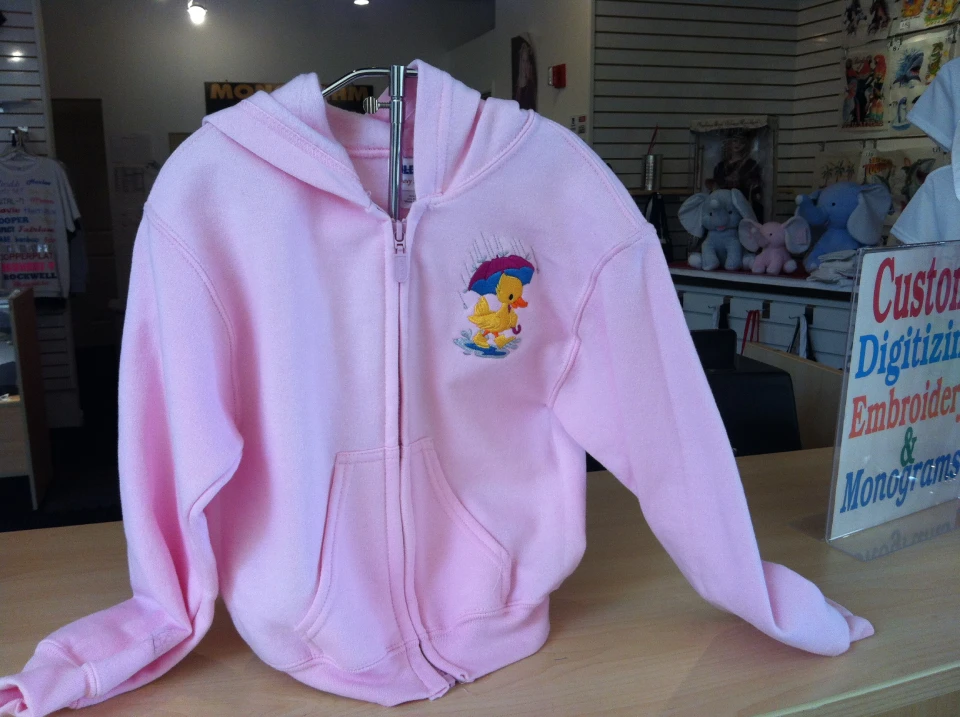The Art of Customized Needlework: Unlocking the Keys to Creating Special and Memorable Styles
Needlework, a craft soaked in tradition and artistry, holds within its detailed stitches the power to transform material right into a canvas of distinct expression. The secrets to creating customized embroidery layouts that mesmerize the eye and leave a lasting impact depend on a fragile balance of method, creativity, and interest to detail. As we look into the globe of custom needlework, we uncover the nuanced interplay in between thread choice, stitch complexity, and design customization that raises a simple garment to an artwork. Join us on a journey with the art of custom embroidery as we decipher the mysteries behind crafting genuinely unforgettable and distinctive creations.
Selecting the Right Needlework Threads
When choosing embroidery strings, what vital aspects should you take into consideration to make certain the ideal outcomes for your customized styles? The option of embroidery string is important in determining the last end result of your stitched layout.
Thicker strings can include measurement and texture to your layout, while finer threads are excellent for complex information and little message. In addition, thinking about the color fastness and washability of the string is essential to make certain that your custom designs preserve their quality and vibrancy over time.
Checking Out Different Stitch Strategies
To explore the world of 'Exploring Various Stitch Strategies', one should understand the intricacies and nuances that each stitching technique offers the art of embroidery. Various stitch techniques not only add visual passion but additionally add to the overall appearance and dimension of the design. One popular stitch technique is the satin stitch, which entails carefully packed parallel stitches to create a smooth and glossy surface, perfect for completing shapes and creating strong lays out.
On the various other hand, the backstitch is a flexible technique often made use of for detailing and adding great information. It involves sewing in reverse to develop a solid line of needlework. Additionally, the French knot stitch includes a tactile element to layouts, excellent for developing distinctive accents like flower centers or attractive touches.
Discovering different stitch techniques permits embroiderers to play with light, darkness, and depth within their layouts, raising the visual charm and imaginative top quality of their embroidery jobs. By mastering numerous sewing methods, one can unlock unlimited opportunities for developing one-of-a-kind and remarkable custom embroidery pieces.
Incorporating Personalized Style Elements
Having actually checked out the details of different stitch methods such as the satin stitch, backstitch, and French knot, the emphasis now moves in the direction of including tailored design aspects in custom-made embroidery tasks. Personalized layout aspects play an essential role in making needlework tasks genuinely one-of-a-kind and unforgettable. One way to integrate personalization is by adding initials, names, or significant days to the style. This not just includes a customized touch but also improves the find more information nostalgic value of the needlework piece.
One more way to incorporate personalized design components is by consisting of icons or motifs that hold special meaning to the recipient or reflect their passions and personality. Incorporating a favorite blossom, animal, or hobby-related symbol can make the embroidery design extra meaningful and personalized. Furthermore, selecting colors that reverberate with the recipient or straighten with the designated theme can further boost the customization of the needlework task.
Mastering the Art of Shade Control
One key aspect of shade sychronisation is understanding shade theory. This consists of recognizing just how different colors interact with each other, the feelings they communicate, and how they can be combined to produce aesthetically enticing pants tailor near me layouts. By see this applying color theory concepts, embroiderers can create harmonious color schemes that boost the overall look of the layout.
Additionally, taking note of contrast is vital in color coordination. Using contrasting colors can help particular elements of the style pop, improve readability, and produce a visually dynamic needlework item. By understanding the art of color sychronisation, embroiderers can boost their layouts and create unforgettable pieces that resonate with customers and viewers alike.
Enhancing Appearance With Advanced Embroidery Stitches

French knots, for instance, are ideal for including small, raised dots to your style, simulating the appearance of beads or developing a textured surface area. Bullion knots, on the other hand, can be used to produce twisted, ropelike aspects that include a lavish feel to the embroidery. Seed sewing entails tiny, scattered stitches that can fill out areas with a speckled texture, while turkey work produces fluffy, dimensional accents similar to pet fur or foliage. Trying out these advanced embroidery stitches allows you to push the boundaries of standard needlework and create truly distinct and visually enticing textures in your designs.
Conclusion
In final thought, the art of custom needlework involves a combination of picking the best threads, checking out various stitch strategies, integrating personalized layout aspects, grasping shade control, and enhancing texture with sophisticated stitches. By recognizing and applying these crucial elements, embroiderers can develop special and memorable styles that display their creativity and skill. Embroidery enthusiasts can open the secrets to developing beautiful and bespoke pieces that stand apart and leave an enduring perception.